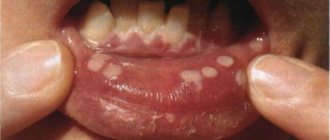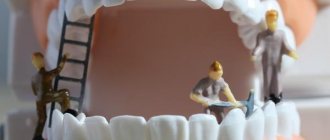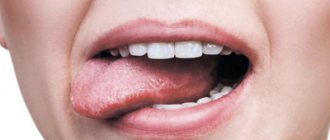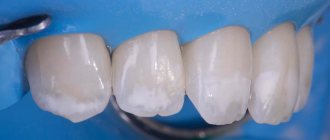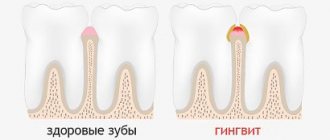Today in veterinary medicine it is practiced to use methylene blue for chickens. This is a strong antiseptic that destroys pathogenic microorganisms and helps cope with a huge number of diseases. It can be used to treat damaged skin, cure poisoning, infectious or viral pathologies. The drug is harmless if you follow the instructions for use and do not violate the dosage. Let's figure out what this remedy is for, how to use it and whether there are side effects.
What kind of drug is this?
Methylene blue is a solution of blue iodine, also called “Iodinol”. It is sold at any pharmacy and is available without a prescription. The main characteristics of the drug can be found in the table:
| Characteristic | Description |
| Release form | 1% alcohol solution, which is available in 10 ml bottles. |
| Powder for preparing an aqueous solution, which is available in 10 g bottles. | |
| Ampoules containing 20 ml or 50 ml of a 1% solution of methylene blue in a 25% glucose solution. | |
| Solubility | It dissolves well in water in a ratio of 1:30, but slightly in alcohol. |
| Best before date | Solutions are suitable for use for 3 years from the date of manufacture, and powders do not impose any restrictions. |
| Storage conditions | The “blue” should be kept in a dark place in a tightly closed bottle at a temperature of 15˚C to 25˚C. |
How to preserve methylene blue, expiration date
Blue bought at a pharmacy does not have a shelf life, provided that the storage conditions are met. Solutions with water or alcohol are suitable for 3 years from the date of issue. After opening, the period of suitability is shortened. The jars should be stored tightly closed, at low humidity and air temperature +15-25. If the blue spills on furniture or clothes, it cannot be washed off.
Methylene blue checker
Iodine checkers are widely used in the treatment and prevention of pathological conditions in birds. They are purchased at the pharmacy; they have high permeability. Checkers are used for the following purposes:
- disinfect the chicken coop;
- prevent outbreaks of epidemics;
- implement therapy during outbreaks of infections.
How does an antiseptic work?
Having understood the properties of methylene blue, you can understand why it is used to treat diseases in chickens:
- When applied to infected skin, its active substance reacts with proteins of pest cells and forms compounds of organic origin. After some time, these diseased cells die. Thus, “blue” destroys pathogenic microorganisms and disinfects the surface on which it is applied, which is why it is used in surgical practice and veterinary medicine for antiseptic treatment.
- Blue iodine can be used not only externally, but also internally. When a substance enters the body, it negatively affects the pathogenic flora in the gastrointestinal tract, and therefore helps with poisoning. In addition, it can relieve mild pain.
- Some believe that “blue” acts like brilliant green. However, this is not true, since this substance is poorly soluble in water and alcohol. When it gets inside a bacterium, it provokes cell dysfunction, which leads to the death of the organism. Since the substance is quickly eliminated from the animal’s tissues, a negative reaction can be avoided.
- Like regular iodine, “blue” stimulates the thyroid gland, and it performs a protective function against harmful microorganisms. With a lack of iodine, the functionality of this organ is impaired, which leads to massive disorders in the body of chickens - their immunity decreases, and malfunctions of the nervous system occur.
Thus, “blue” has a disinfecting and analgesic effect, is an antidote for poisoning and a thyroid stimulant.
How is the drug beneficial for chickens?
Methylene blue is safe for chickens if the instructions for use are followed. The drug does not require special skills or laboratory conditions when used, so farmers will not have any problems in treating it with its help.
The tool is capable of:
- cure skin damage;
- disinfect wounds;
- eliminate parasites, bacteria, pathogenic microorganisms;
- stimulate the work of leukocytes;
- maintain normal red blood cell levels;
- improve blood pressure;
- help the body of chickens in case of poisoning;
- increase the body's resistance to disease.
Keep in mind that methylene blue alone will not cope with serious pathologies. This is not a magic powder that will save you from all problems. But in combination with other drugs, it helps speed up the healing process of chickens.
Another useful preparation for chickens based on iodine has the same effect. It is described in the article “Use of iodinol for laying hens.”
Methylene blue has a specific aroma and strongly stains the skin.
What helps chickens?
Methylene blue performs the following therapeutic functions:
- treats wounds - burns, ulcers, eczema;
- neutralizes skin parasites;
- destroys bacteria and pathogenic microflora;
- increases the activity of leukocytes;
- controls the level of red blood cells;
- cleanses blood vessels, making them elastic;
- normalizes blood pressure;
- increases immunity.
Of course, “blue” is not a panacea that cures 100% of all kinds of ailments, but in some cases it will be an excellent helper, especially in combination with other remedies.
What is blue iodine used for?
The scope of application of methylene blue is wide. Indications include:
- disinfection of premises;
- treatment of skin lesions;
- resistance to poisoning;
- treatment of fungal infections;
- elimination of skin parasitic microorganisms;
- relief of pain;
- increased exposure to antimalarials;
- for treating affected areas for genitourinary infections.
On affected tissues, the product creates a protective film.
Methods for preparing blue
Blue iodine can be bought at a pharmacy or prepared with your own hands using one of two recipes. Basically, the first recipe is used, the author of which is considered to be the doctor V.A. Mokhnach. The second is less known, but allows you to obtain iodine, which dissolves better without irritating the intestinal and stomach mucosa of the bird.
1 recipe
Ingredients:
- water – 200 ml;
- starch - 1 tbsp. l.;
- sugar – 1 tsp;
- citric acid – 1/2 tsp;
- 5% iodine – 1 tsp.
Preparation:
- Take 100 ml of water, slightly warmer than room temperature, and add starch and sugar to it. Mix thoroughly until the mass becomes homogeneous, without lumps.
- Pour in citric acid and add another 100 ml of water. Place the mixture on the stove and bring to a boil to obtain a kind of jelly.
- Cool the mixture, pour pharmaceutical iodine into it and mix. The liquid should turn blue.
- Pour the mixture into a bottle or jar and close the lid tightly.
Be careful when working with the substance, as it is difficult to wash off when it comes into contact with various surfaces.
Sugar and citric acid are preservatives, so they preserve the qualities of blue iodine. It will not lose its properties for several months. When the composition begins to lose its blue color, it will lose its qualities. Thus, color is an indicator of the activity of the drug.
The preparation of this recipe can be clearly seen in the video below:
2 recipe
Ingredients:
- water – 250 ml;
- starch - 1 tbsp. l.;
- 5% iodine – 1 tsp.
Preparation:
- Take a saucepan with a capacity of 500 ml and pour 50 ml of warm water into it. Add starch and pharmaceutical iodine, mix everything well.
- Pour 200 ml of boiling water into the mixture in a small stream, without ceasing to stir. You should get a solution that resembles a paste.
- Cool the composition and pour into a bottle or jar, seal well.
This iodine can be stored for about 3 weeks in the refrigerator.
Antiseptics: a world without harmful bacteria
Bacteria were the first inhabitants of planet Earth. They live in literally every corner of the planet, even in the bodies of living beings. For example, the human body contains more than 2 kg of bacteria, which are mostly harmless. However, sometimes pathogenic microbes come to visit and begin to adversely affect the functioning of cells. Antiseptics are an effective means of combating these pests.
A few centuries ago, the concept of disinfection did not intersect with medicine in any way, until the Austrian Ignaz Semmelweis discovered the connection between dirty hands and an increase in the mortality rate. With his “clean” hand, the Scot Joseph Lister invented the first antiseptic in the 19th century.
Some antiseptics can destroy germs, while others only slow down their growth
These disinfectants are actively used to heal wounds and to eliminate bacilli and fungal infections.
There are several groups of antiseptics.
| Group | Representatives |
| Halogen-containing | chlorine, iodine |
| Oxidizing agents | hydrogen peroxide, potassium permanganate |
| Metal compounds | preparations of bismuth, zinc, lead |
| Acids and alkalis | salicylic and boric acids, sodium tetraborate, benzoyl peroxide |
| Aldehydes | cidipol |
| Alcohols | ethanol |
| Phenols | resorcinol |
| Anionic | soap |
| Herbal preparations | marigold or chamomile flowers |
| Dyes | methylene blue, brilliant green |
Many of them have flaws that appear when used externally, such as chlorine, the pungent odor of which irritates the mucous membranes. Methylene blue, on the contrary, does not have a negative effect on the mucous membranes.
Chlorine comes into contact with the eyes and causes unpleasant pain.
Directions for use and dosage
Methylene blue is a universal remedy that is used to treat various pathologies in chickens. Dosages of “blue” depend on the disease:
- Cuts and wounds . They must be treated with a 1-3% alcohol solution of methylene blue. In this case, it serves as an antiseptic. If the wound is shallow, it is enough to dilute the “blue” with water, moisten gauze or cotton wool in the resulting composition and lubricate the damaged area of skin.
- Burns . If burns are observed, they should be treated with a 1% aqueous solution.
- Inflammatory processes . If an infection enters the bird’s body and an inflammatory process begins in the stomach and intestines, then blue must be given internally. In this case, breeders need to know and follow a strict dosage of the product: 1 g of powder must be dissolved in 5 liters of cool boiled water. Give the prepared solution to the bird, replacing ordinary water with it. Treatment of chickens lasts until the symptoms of the disease completely disappear.
- Poisoning . If a bird is poisoned by chemicals and poisons, treatment is carried out with “blue” dissolved in glucose. The drug should be administered as an injection to the bird at the rate of 0.2 ml per kilogram of weight. In case of severe poisoning, the dose can be increased to 0.5 ml per kilogram of weight.
- Bursitis . In this case, the bird needs to be given a 2% solution at a rate of 0.01% per 1 kg of weight.
- Coccidiosis . Sick laying hens should be given the drug internally. To do this, blue iodine will need to be diluted with water in equal proportions (1:1). Give the solution to chickens as water. Treatment lasts about a week.
- Pullorosis . "Blue" is also effective against pullorosis. In this case, it should be given to chickens 0.5 ml 3 times a day for 10 days.
- Intractable pathologies . Young chickens should be given 0.5 ml of the drug 3 times a day, and chickens older than a year should be given 1 ml of the drug 3 times a day. Carry out treatment until complete recovery. In order not to kill the bird, you should definitely consult a veterinarian.
- Reduced immunity . In order to strengthen the bird’s immunity, it needs to be given 0.3-05 ml of the drug once a day every day. The duration of treatment is half a month. Blue iodine especially helps to cope with diseases of chickens in the autumn and winter seasons. During this period, they lack vitamins and microelements, which is why various epidemics and colds occur.
Consumption of blue iodine does not in any way affect the egg production of chickens and the quality of their meat!
Indications for use
External use Methylene blue is effective for pyoderma, burns, folliculitis, and other skin diseases.
You can use the product for washing the affected cavities for urethritis and cystitis.
You can also take Methylene blue solution orally for urethritis, cystitis, and other inflammations of the urinary tract.
The drug is administered intravenously for poisoning.
Also, the instructions for Methylene Blue indicate that it can be used to diagnose renal function - due to the fact that after internal use of the drug, urine turns blue.
Blue checker for chickens
Iodine bombs are also used in the treatment and prevention of various diseases of chickens. Blue iodine can be in bulk form, sold in jars or in tablet form. The exact release form depends on the manufacturer. In any case, checkers are very popular, since in this form iodine vapor has a high degree of permeability.
As a rule, checkers are used to:
- disinfect the poultry house;
- prevent epidemics;
- conduct therapy during outbreaks of epidemics.
The checker is convenient in that to carry out disinfection there is no need to empty the room of poultry, since such treatment of the chicken coop can be carried out in its presence.
The drug is used as follows:
- Place the igniter on a non-flammable surface, which should also be level and without slopes. A sheet of iron, concrete or brick is suitable for these purposes.
- Set fire to the saber to carry out a cyclic treatment with iodine vapor.
After setting the checker on fire, blue or slightly violet iodine vapor will begin to be released into the atmosphere. It will burn within 30 seconds, so the birds won’t even have time to suspect anything.
When using iodine checkers, the following nuances should be taken into account:
- If respiratory diseases are detected in chickens, then disinfection with an iodide bomb will have to be carried out once every 2 days.
- When the concentration of the product decreases, you can treat the chicken coop every day, but we must not forget about the breaks that are taken every 3 days.
- Air should not be allowed to enter the room in order to increase the concentration of iodine vapor to 200 mg per cubic meter.
- In order to better process the chicken coop, it is still worth temporarily transferring the birds to another room. In addition, all windows and doors must be tightly closed. In this case, it will take about 3 hours to complete disinfection. Afterwards, you need to ventilate the room and rinse the equipment with clean water, and only then start the chickens.
Watch a short video on treating a chicken coop with an iodine bomb:
Instructions for use
For external use, Methylene Blue is used in the form of an alcohol solution of 1-3%. Treat the affected (pre-cleaned) areas using a cotton swab. Apply the solution to both damaged and adjacent healthy tissue.
For rinsing with cystitis and urethritis, use an aqueous 0.02% solution (the powder is diluted in a ratio of 1:5000)
Adults take methylene blue orally, according to the instructions, 0.1 g three or four times a day.
Children also take the solution three or four times a day, but the required amount of the drug is calculated based on the child’s age: 0.005-0.01 g for one year.
Side effects and contraindications
One should not be irresponsible about the use of “blue” in the treatment of certain pathologies in birds, since it can cause dangerous side effects. These include:
- damage to excretory organs;
- pain in the stomach and intestines;
- development of allergies;
- decrease in hemoglobin in the blood (anemia).
Side effects may increase when treating a large area of skin with blue iodine.
You will also have to deal with side effects if the dosage of the drug is not correct. In this case, chickens become poisoned and experience diarrhea and vomiting.
As for contraindications, this drug cannot be used if it causes allergies in chickens in the form of skin irritation, itching, redness, etc. In some birds, allergies may occur even with strict adherence to the dosage.
Vitamin deficiency and other pathologies
If a chicken gets sick due to vitamin deficiency, it is given water for 5-7 days. Soldering is the most convenient method of treatment. Chickens calmly drink healing water because it tastes almost no different from regular water.
Veterinarians usually recommend giving water with methylene blue for laryngotracheitis, streptococcosis, smallpox, ornithosis, omphalitis, colibacillosis, mycoplasmosis, pasteurellosis, aspergillosis, ascariasis.
You can learn about diseases that develop due to worms and methods of their treatment from the article “Symptoms and treatment of worms in chickens.”
Breeders reviews
Breeders often use methylene blue to treat their pets. They share their experience in the comments:
★★★★★
Anna, 35 years old, Volgograd region. We have about 10 chickens.
This is quite enough for our family, as they lay eggs well. But one day an accident happened to our main laying hen. She landed unsuccessfully, flew off the fence, and cut her leg in the shin area on a sharp object standing nearby. At first we tried to stop the bleeding with hydrogen peroxide, and then we treated him with a solution of methylene blue. We tried to treat the sore leg every day. She healed quite quickly. ★★★★★
Nikita Sergeevich, 41 years old, Moscow region. Not long ago I noticed that several chickens began to fall on their feet and sit out in the sawdust (they serve as bedding for me).
Before this, my chickens laid eggs very well, so I guessed that they lacked calcium, since a lot of it goes into the formation of eggs. To cure the chickens, he began giving them shells and chalk as a source of calcium. Additionally, he began to treat them with methylene blue, pouring its solution with a syringe into the beak of each bird. After the first procedure they became more active. I added blue iodine to drinking water for a few more days. Gradually all the chickens recovered. I will give more if necessary. ★★★★★
Maria Ivanovna, 50 years old, Rostov region. Every breeder should know about such a wonderful, and most importantly budget-friendly product, as methylene blue.
Most often I use it to disinfect the chicken coop. I spray the solution on the walls and wipe down the equipment. Thanks to this, my chickens are always healthy. Sometimes, for prevention, I drop blue iodine into the drinking water of birds. ★★★★★
Maxim Viktorovich, 64 years old, Astrakhan region. I got small chickens, but began to notice that they were not as active and had loose droppings.
I took several of them for analysis and it turned out that the chickens were infected with coccidiosis. An experienced farmer neighbor advised me to prepare blue iodine and feed it to the chickens. That's exactly what I did. I gave them a solution of the drug 0.5 ml 3 times a day. I treated them like this for about a week. At the same time, I removed fresh greens from the chicken menu. To my joy, the chickens were saved. ★★★★★
Andrey Petrovich, 48 years old, Krasnodar region. Not long ago I began to notice that the chickens began to be reluctant to eat food.
Just in case, I took the chicken droppings to the laboratory for analysis. To my surprise, it turned out that my chickens were infected with helminths. I've heard that you can fight them with methylene blue and wormwood. First, I prepared a decoction of wormwood, boiling it for about 10 minutes, and then added blue iodine to it. I dropped 5 drops of the solution into each chicken's beak. Just in case, I added the same composition to the drinking bowls. I treated my chickens like this for several days. Then I submitted the litter for analysis again. No more helminths were found. During treatment, the chickens gradually became more active again. Hide
Add your review
Methylene blue is a drug with an antiseptic effect and excellent digestibility, which is effectively used to treat chickens. However, you should consult your veterinarian before using it. He will assess the prospects for treatment and also help you choose the right dosage based on the specific disease and condition of the chickens.
0
0
Copy link
What is it used for?
Methylene blue checkers are used in therapy and prevention of infectious and viral diseases. Checker is a cylinder-shaped tablet consisting of crystalline methylene blue and auxiliary components.
These products are usually used to disinfect a chicken coop during an outbreak of infection or for preventive purposes if one individual is sick.
The fumes from the checker are harmless to the body of poultry. Therefore, it is not necessary to remove the chickens from the premises during the procedure.
Side effects
The drug has virtually no contraindications, with the exception of individual intolerance, manifested in the appearance of allergic skin reactions. It is not recommended to apply the solution to mucous membranes.
Methylene blue can be successfully used in the fight against many chicken diseases
How to minimize the risks of chicken diseases: preventive measures
Many chicken diseases can be effectively prevented using a number of simple manipulations. To ensure that the livestock is always healthy and vigorous, it is recommended:
- It is better to breed laying hens yourself.
- Avoid buying chickens. If there is such a need, then purchase chicks only from one trusted manufacturer.
- Purchasing one-year-old young animals significantly increases the chances of acquiring healthy livestock.
- There should always be fresh air in the chicken coop.
- Periodic cleaning and disinfection should be carried out.
- It is necessary to do a daily inspection of the birds.
- Vaccinate in a timely manner, in accordance with the recommendations of the veterinarian.
Preventive measures are the key to the health and productivity of birds
Chickens belong to a small variety of animals that are characterized by one unusual feature: after serious illnesses, it is not the strongest individuals that survive, but, on the contrary, the weakest representatives of the species. However, after their recovery, the egg production rates of such chickens drop significantly.
To avoid such situations, preventive measures and regular disinfection should be carried out periodically. Methylene blue can be used as an antiseptic. The drug is “long-lasting” and, in addition to its sanitary functions, can have a general health-improving effect on chickens.
